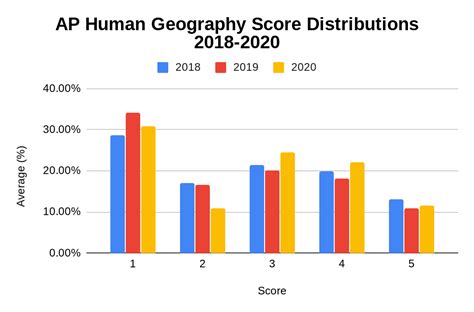Introduction

Quantitative data plays a vital role in expanding our understanding of the world’s human populations and geographies. By analyzing numerical information, AP Human Geography students can identify patterns, trends, and relationships that contribute to a more informed perspective on global issues. In this comprehensive guide, we delve into the importance, applications, and transformative power of quantitative data in AP Human Geography.
The Importance of Quantitative Data
Quantitative data provides objective, measurable evidence that supports and strengthens geographic analysis. It:
- Quantifies spatial distributions and patterns
- Facilitates comparisons between different geographic areas
- Allows for statistical analysis to identify significant relationships
- Provides a basis for making informed conclusions and predictions
Applications of Quantitative Data
Quantitative data finds wide applications in various aspects of AP Human Geography:
- Population Studies: Data on population size, density, growth rates, and age structure enables understanding of demographic trends and their impact on society.
- Economic Geography: Analysis of economic indicators such as GDP, income inequality, and unemployment rates reveals patterns of economic development and disparities.
- Urban Studies: Quantitative data on urban land use, housing, and transportation helps planners design sustainable and equitable cities.
- Environmental Geography: Data on climate, water resources, and land use patterns informs policies for environmental protection and sustainability.
- Political Geography: Analysis of electoral results, voting patterns, and political boundaries provides insights into the distribution of political power and its impact on society.
Benefits of Using Quantitative Data
The use of quantitative data in AP Human Geography offers numerous benefits:
- Objectivity: Numerical data provides an unbiased foundation for analysis, reducing the influence of subjective interpretations.
- Accuracy: Precise measurements and rigorous statistical methods ensure data accuracy, enhancing the reliability of conclusions.
- Comparability: Data from different sources and time periods can be compared to identify changes and trends over time.
- Predictive Power: Statistical modeling based on quantitative data enables predictions about future outcomes, aiding in decision-making.
Transformative Power of Quantitative Data
Quantitative data empowers students to:
- Embrace Data-Driven Decision-Making: Analyze patterns and relationships to make informed decisions about geographic issues.
- Quantify Abstract Concepts: Translate qualitative factors into numerical values, providing a concrete basis for analysis.
- Identify Inequities and Disparities: Use data to uncover disparities and advocate for social justice and equity.
- Foster Global Citizenship: Understand the interconnectedness of human populations and environments, promoting global empathy and cooperation.
Innovative Applications of Quantitative Data
Beyond traditional applications, quantitative data can also be used in novel ways to address global challenges:
- Geospatial Analysis: Combine geographic data with statistical analysis to create interactive maps and visualizations that reveal spatial patterns and relationships.
- Big Data Analysis: Leverage advanced computational techniques to analyze massive datasets, unlocking new insights into complex human dynamics.
- Data Storytelling: Use data visualization and narrative techniques to communicate geographic information effectively, engaging audiences and inspiring change.
- Precision Geography: Apply location-specific data to tailor policies and interventions to the needs of specific communities, enhancing effectiveness and equity.
Tables
| Aspect of Human Geography | Quantitative Data Example | Importance |
|---|---|---|
| Population Studies | Population pyramid of a country | Reveals age distribution and potential for demographic shifts |
| Economic Geography | GDP per capita of different regions | Identifies economic disparities and development gaps |
| Urban Studies | Population density of a city | Guides land use planning, transportation infrastructure, and housing policies |
| Environmental Geography | Carbon emissions by sector | Informs climate change mitigation strategies and policy-making |
| Political Geography | Electoral map of a region | Analyzes voting patterns and political representation |
FAQs
-
What are the limitations of quantitative data?
Quantitative data can be limited by its accuracy, its focus on measurable factors only, and its potential for bias. -
How can I interpret quantitative data effectively?
Statistical methods, graphical representations, and careful consideration of the context are essential for effective interpretation. -
Why is quantitative data important for AP Human Geography?
It provides objective evidence, enables comparisons, and facilitates statistical analysis, enhancing the understanding of geographic patterns and relationships. -
What are some common pitfalls in using quantitative data?
Misinterpretation, overgeneralization, and ignoring contextual factors can lead to misleading conclusions. -
How can I improve my quantitative data analysis skills?
Practice using statistical software, engage in data visualization exercises, and consult with experts for guidance. -
What are some innovative ways to use quantitative data in AP Human Geography?
Geospatial analysis, big data analysis, data storytelling, and precision geography offer exciting possibilities.
Conclusion
Quantitative data is an indispensable tool for AP Human Geography students. By leveraging its strengths and addressing its limitations, students can gain a deeper understanding of global populations, environments, and human activities. Quantitative data empowers them to make informed decisions, quantify abstract concepts, identify inequities, and foster global citizenship. As technology and data science evolve, new applications of quantitative data will continue to emerge, offering unparalleled opportunities for research, analysis, and solving the complex challenges facing our planet.
